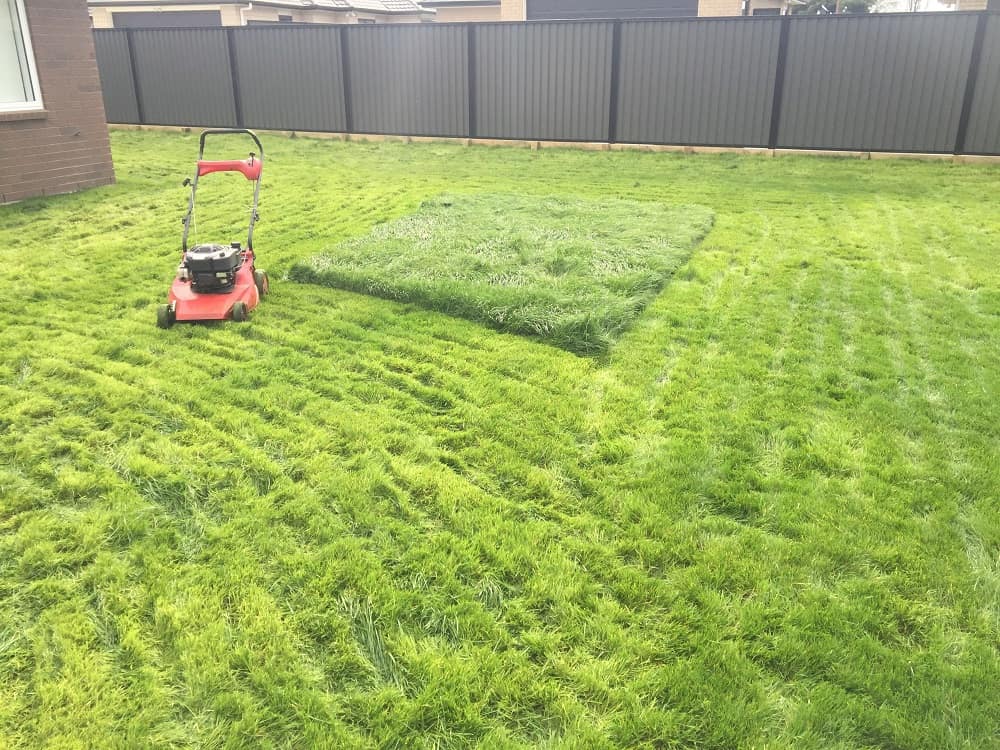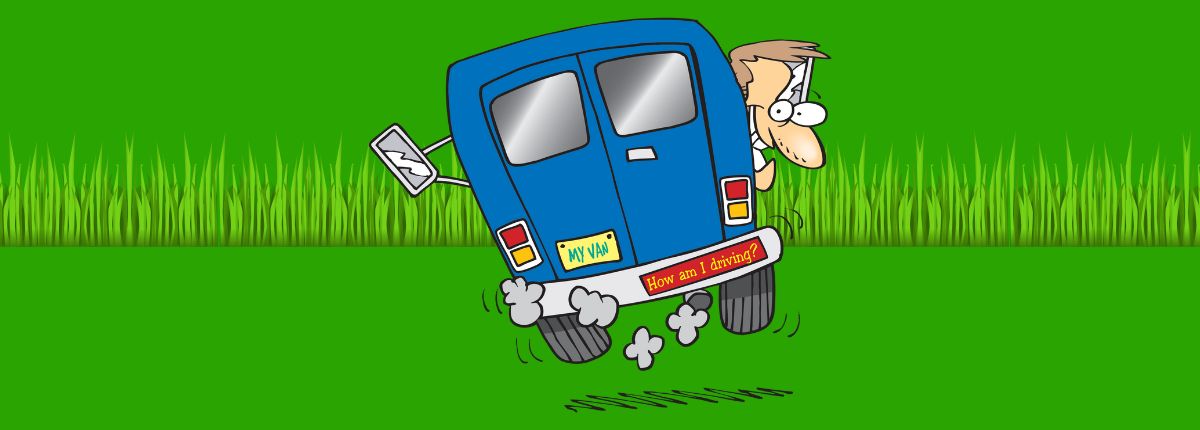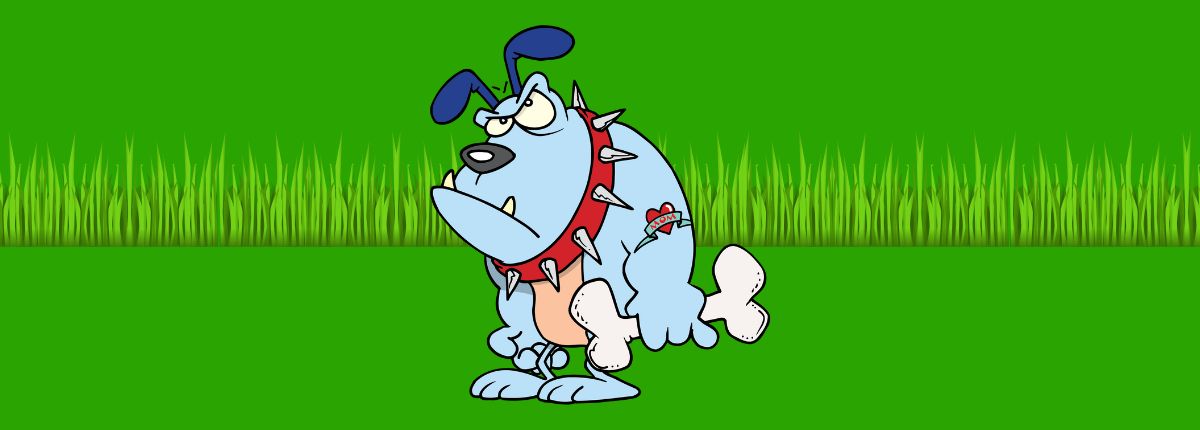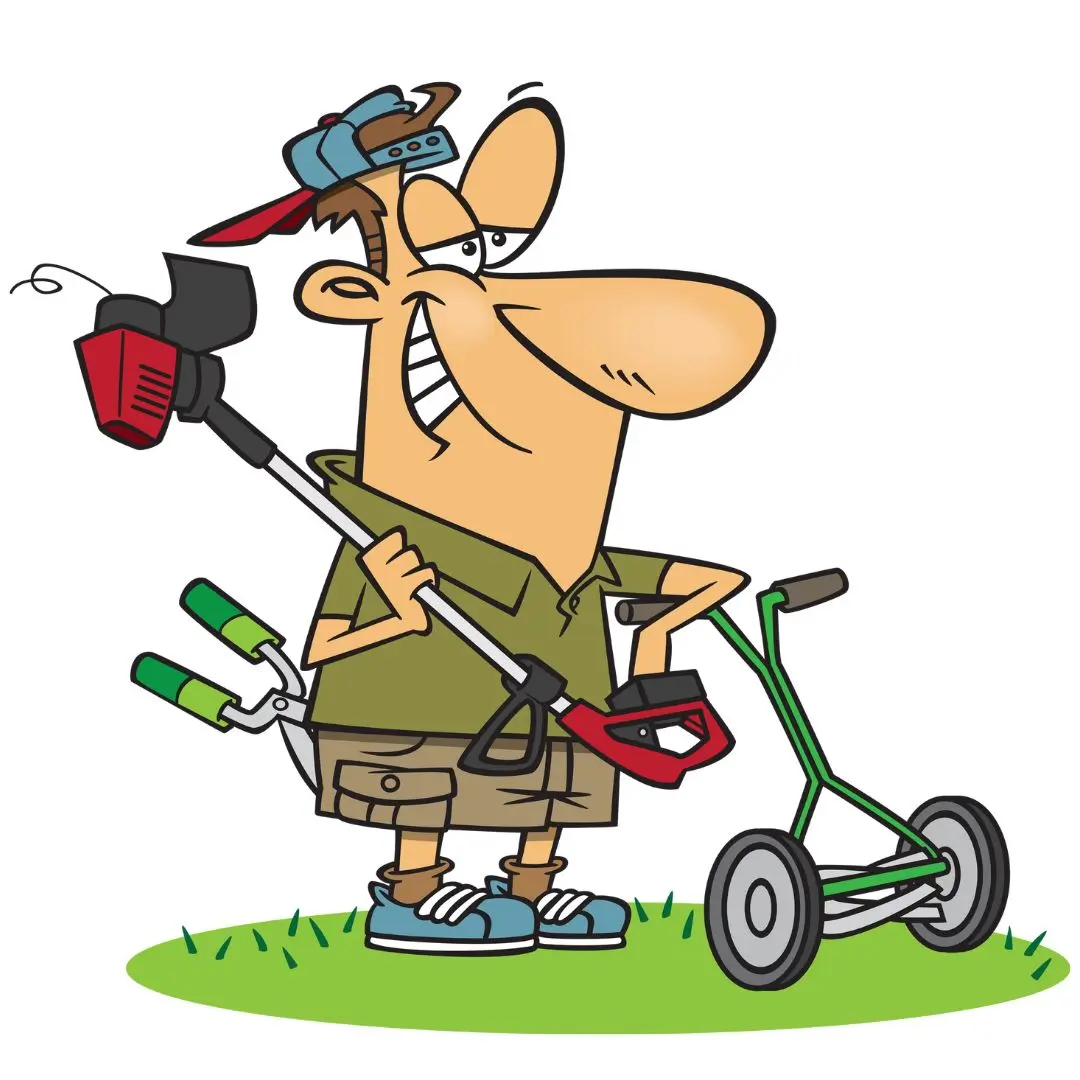When do you cut a new lawn?
Why do you need to get this right?
So you have a new lawn and think it will be due for a mow soon.
Suppose you haven’t done this before; you may be a bit concerned. You want to get this right because you want a good-looking, healthy lawn.
But when exactly do you do you mow new grass?
In my 30 years in the industry, I have done my fair share of new lawns and there are a few hard and fast rules that you need to be aware of.
So when do you cut a new lawn? A lawn can be ready for its first mow anytime between 4 to 8 weeks, but you can do a few simple things to check if your lawn is ready.
- Is the grass over 4 inches high? – If so, it will be ready for its first cut.
- Pull in the tip of a piece of grass – If it rips off, it is ready. If the whole plant starts to come out, leave it for another week and try again.
- Look for a wave – I find the perfect time to mow a new lawn is just as the blade of grass starts to bend under its own weight. When you see the beginnings of a wave in your lawn it is time to cut.
Now that you have established that your lawn is ready to mow don’t go charging out there with your mower just yet. There are a few things that you need to do to give your lawn the best start and optimal health.
When do you cut a new lawn
Here are four things you can do today to start your lawn well.
Give your mower a quick wash.
You want the inside of the deck to be as clean as possible. Remember, if you have a four-stroke lift, the spark plug is towards the sky (do not roll it on its side). If you are still unsure if you have a two- or four-stroke stroke, read this guide.

Make sure your blades are sharp.
If your blades are too blunt, they tear rather than cut the grass. This causes damage and bruising on the grass and can also uproot tender new grass shoots. This will encourage diseases and fungi. You do not want this on your new lawn.
Use sharp mower blades.
Set your mower to its highest setting.
Your first mow needs to be high. Somewhere around 3 to 3.5 inches. Don’t take any more than 33% off the height of the lawn.
There is something that all good gardeners follow called the rule of thirds. This means that you never take more than a third of anything. This includes trees, shrubs, and grass. Two new lawns. The one on the left is cut wrong (too short) and the one on the right is correct. (one of my lawns)
Make sure the lawn is dry.
It must have been at least 48 hours since the last time it rained. The soil needs to be dry and not moist. If you are leaving tire tracks, then the lawn is too wet.
What can go wrong on your first cut?
If you do your first cut too early it doesn’t matter how sharp your blades are. You are going to do damage to the lawn. The roots of the new grass need time to get established. If they are too shallow, the mower can pull them out as you mow, resulting in a patchy lawn.

This is not so bad if you leave the lawn too long before the first mow. Although the lawn will look terrible after the first mow, it should come right after the following few cuts.
You will need to cut it as high as possible the first time it is cut. Apart from overworking your engine, the main issue here is that the grass will have nowhere to go. The shoot on most domestic mowers is no higher than about 8 inches at most. If your lawn is longer than that, it will clog your shoot, and you will only get a small percentage of the grass into your bag. It may be best not to have the catcher attached the first time around and rake up the excess grass.
You will also notice uncut lines in your lawn (I call these mohawks). They are caused by your wheels compressing the uncut grass as you mow. Double cutting straight away will not help because some of these pieces can take up to 24 hours to stand up again. The only real way to solve this problem is to recut a few days later. That will not solve the problem but it will help.
If possible, do another mow a few days later.
If you cut it too short, you can stress the grass and cause some die-off, especially if the heat gets up shortly after the lawn is cut. The foliage that you have exposed is used to being covered and protected from the elements. The further you cut down, the worse this can become.
A short lawn can also encourage diseases and flat weeds, so it is best not to go there.

Frequently Asked Questions
How should I look after the lawn in the future?
The best advice for a good-looking lawn is to take a little off each time and mowing often. Cut high, and every time you mow the lawn, change direction. This will prevent lawn mowing ruts and stop any lawn mowing patterns from showing on the lawn.
Clean the mower after each mow and keep your machine in good condition. Pay attention to the state of the blade and watch out for wear on the axle bushes that could make your mower cut unevenly.
When do I mow and over-seed the lawn?
If your lawn has been overseeded, you must leave the whole area for about 8 weeks.
Ensure you water it daily to keep the soil moist; a bit of fertilizer after the first couple of weeks will make a huge difference. The new grass must germinate and put down good roots before you cut it.
I also prefer to mulch overseeded lawns as it helps feed the nutrients back into the soil and produces a healthier lawn. If you mulch that over-seeded area, it will turn back into lawn quicker.
How often should I mow my lawn?
I have covered this elsewhere but if you are looking for cutting cycles for certain types of grass then you can find out with this guide from the University of California UC Healthy Lawns—Mowing: How much, when, and how often to mow
Get tips & tricks on how to grow a profitable lawn care business delivered to you inbox every week.






Leave a Reply